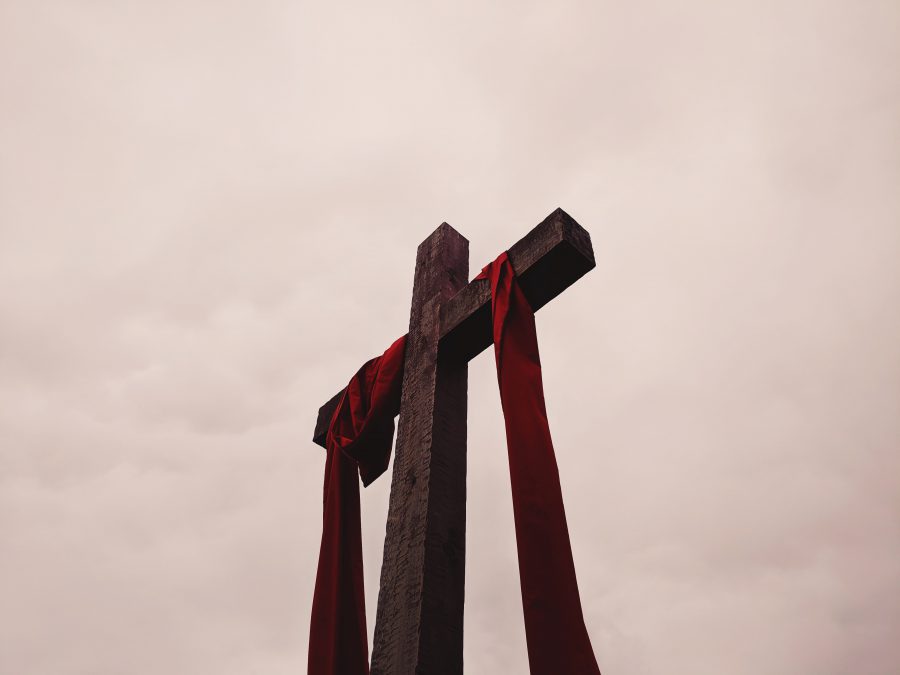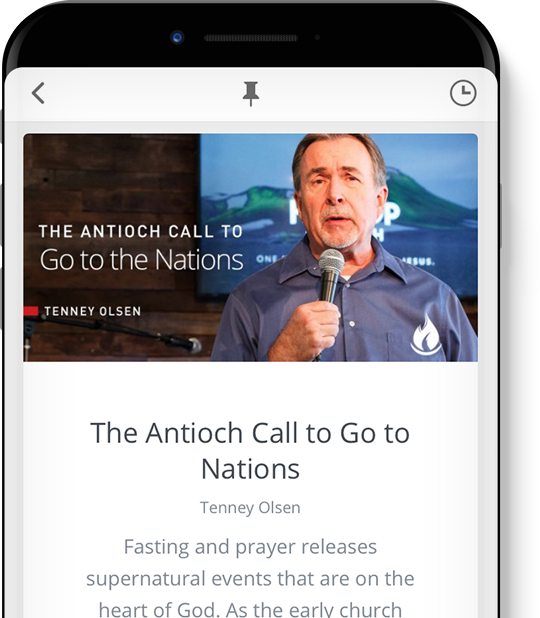“Most assuredly, I say to you, unless a grain of wheat falls into the ground and dies, it remains alone; but if it dies, it produces much grain.”
When Jesus spoke these words in John 12:23-24, He was foretelling His own death. Even on the surface, His metaphor is rich with meaning: like a seed, He would be buried and produce a harvest of new life through His death. But His imagery goes far deeper than that. In fact, this quote hints at a divine mystery, a coded love-letter that God wrote to the Jewish people over 1,300 years before Jesus’ death so that they might more easily recognize their Messiah through two annual feasts: Early and Latter Firstfruits (AKA Pentecost). By examining these feasts and their contexts in the Jewish calendar, we can see that the first points to Jesus’ resurrection; that the second anticipates the outpouring of the Holy Spirit in Acts 2; and that both illuminate the loving brilliance of God’s plan to pursue and redeem people from every tongue, tribe, and nation.

Setting the Stage: Jesus’ Death on Passover
Christians generally pay little attention to the feast of Early Firstfruits, not least because it falls the day after the far better-known seven-day feast of Passover (described in Exodus 12:1-30). Since we can more easily understand Early Firstfruits in the context of Passover, we will first take a moment to explore how Passover points to Jesus as the Messiah.
God instituted the annual Passover feast to commemorate when, over 1,300 years before Jesus, He sent Moses to miraculously lead the Jews out of cruel slavery in Egypt. God sent 10 Plagues to compel the Egyptians to free His people, and the Passover deals with the 10th: the death of the firstborn. God commanded each Jewish household to slaughter a male “Passover lamb” without blemish and spread his blood on their doorposts. As God passed throughout Egypt killing the firstborn Egyptians, He “passed over” every home bearing the lambs’ blood, sparing everyone inside.
“…this requirement ensured 1,300 years in advance that basically the whole Jewish nation would be present to witness or at least hear about Jesus’ crucifixion.
Jesus was crucified and buried during Passover. Passover was one of three annual feasts which all Jewish males had to celebrate in Jerusalem (Deuteronomy 16:16-17), so this requirement ensured 1,300 years in advance that basically the whole Jewish nation would be present to witness or at least hear about Jesus’ crucifixion. His death was conspicuous, so much so that secular historians recorded it in detail and Cleopas indicated in Luke 24:18 that only a stranger to Jerusalem would not have known about it. Additionally, every Jewish household was required to slaughter their Passover lamb on Preparation Day (Hebrew calendar, Nisan 14), the exact day when Jesus died. Thus, God brilliantly set the stage for His Son to die at the exact time when the entire Jewish nation would have most easily understood that He was the “Lamb of God who takes away the sins of the world” (John 1:29). [4]

Jesus’ Resurrection: the Early Firstfruits Offering
Jesus died before sundown on a Friday and rose on a Sunday (a span of three days by the Jewish calendar, which starts each day at sundown). The first “Easter Sunday” was actually the feast of Early Firstfruits (Nisan 17) which, surprisingly, is the most referenced date in the Bible aside from Passover. Here are some other Biblical events that landed on this day:
- Noah’s Ark came to rest on Mt. Ararat (Genesis 8:4)
- Jacob’s family went to Egypt 430 years before the Exodus (Exodus 12:40-41)
- Moses led the Jews through the Red Sea (Exodus 3:18, 5:3)
- Israel entered the Promised Land, ate its fruits, and received instructions for conquering Jericho (Joshua 5:10-13)
- Hezekiah cleansed the Temple (2 Chronicles 29:1-28)
- Queen Esther saved the Jews (Esther 3:1, 5:1)
“The odds of just 2 of these events occurring on the same day of the Hebrew year are 1 in 129,000; the odds of all of them coinciding is 1 in 783,864,876,960,000,000.
The odds of just 2 of these events occurring on the same day of the Hebrew year are 1 in 129,000; the odds of all of them coinciding is 1 in 783,864,876,960,000,000. Moreover, these events have themes in common with Jesus’ resurrection, including the fulfillment of redemptive promises and entry into new life.
The resurrection–and even Jesus’ grain imagery–fit directly into the themes and rituals of Early Firstfruits. The feast marks the beginning of the barley harvest. Before tasting their harvest, each Jewish family would bring a firstfruits offering of about 2.2 liters of barley to the priest, who would wave it before the Lord so that their whole harvest would be blessed. The barley and any additional crops offered (grapes, olives, etc.) were raw and unprocessed.
Let’s compare Jesus–the “grain” that must die to “produce much grain”–to this Early Firstfruits offering. Being unbaked, the offering was without leaven. Jesus used the imagery of leaven to represent sin (see, for example, Matthew 16:6), so the raw state of the grain emphasizes His sinlessness. Both Jesus and the grain offering were “raised” before the Lord on the same day, and for the same reason: so that the rest of the harvest might be redeemed. And what is the rest of the harvest? All who will be raised with Him. “But now Christ is risen from the dead, and has become the firstfruits of those who have fallen asleep” (1 Corinthians 15:20). He is the “Firstborn from the dead” (Colossians 1:18, Revelation 1:5) and the “Firstborn among many brethren” (Romans 8:29). And just as the Jews could not eat any of their harvest until the priest had waved their Early Firstfruits offering before God, so no one can enter into eternal life apart from Jesus’ sacrifice. He is the “forerunner” who has “entered before us” (Hebrews 6:20) [4].

Preparing for Pentecost: the Counting the Omer
After His resurrection, Jesus told His disciples, “‘Behold, I send the Promise [note that the word used for “firstfruit” means “promise”] of My Father upon you; but tarry in the city of Jerusalem until you are endued with power from on high’” (Luke 24:49). Amazingly, but not surprisingly, He gave these instructions during the annual, 49-day period of waiting between Early and Latter Firstfruits (Pentecost) known as the counting of the Omer. Jews observe this period by counting each day leading up to the wheat harvest beginning on Pentecost. They hallow this as a time of anticipating God’s revelation. Extra-biblical Jewish writings claim that after Moses led the Jews through the Red Sea (on Early Firstfruits), God told them to count 49 days until He would give them His Law. Whether this is true or not, we do know that God gave Israel a chunk of the Mosaic Law containing the 10 Commandments at Mt. Sinai on Pentecost. So while the disciples tarried in the upper room for the promised Holy Spirit, the whole Jewish nation identified with their predecessors in tarrying for God’s Law, stirring themselves up to hunger for God’s revelation. They thought about Mt. Sinai: loud noises, fire descending, the fresh revelation from God that birthed their nation and solidified its identity for all time (Exodus 19:15-18, Deuteronomy 4:11). [4] [2]
These meditations prepared the crowds to understand the events of Acts 2: a loud noise (v. 2), tongues of fire (v. 3), and the birth of a new “nation”: the Church. The echoes of Exodus found in Acts 2 are even more striking when we consider yet another extra-Biblical belief which the Jews of that day held. According to Jewish tradition, when God delivered the 10 Commandments on Mt. Sinai, He sent 70 tongues of fire forth from the mountain, each visiting a separate nation and proclaiming His Law in their native tongue. The Acts 2 crowd had been contemplating these multilingual tongues of fire for 49 days. Clearly, not everyone understood them when they saw them on the disciples’ heads (Acts 2:13), but perhaps many did. [4] [3]

The Church: the Latter Firstfruits Offering
Finally, after 49 days of anticipation, all the Jewish males would gather in Jerusalem to celebrate the start of the wheat harvest and the giving of the Law on Pentecost. A fundamental theme at the heart of this feast is outreach to the gentiles. Deuteronomy 16:11 commanded the Jews to celebrate Latter Firstfruits with “…the stranger and the fatherless and the widow who are among you…” In obedience, Jews would invite gentiles to celebrate with them. They would further emphasize this theme by reading the book of Ruth, a story about a Moabite woman from Jesus’ lineage who marries into a Jewish family and refuses to leave them even after her husband dies. In Ruth’s own words to her mother-in-law Naomi, “‘Entreat me not to leave you, or to turn back from following after you; for wherever you go, I will go; and wherever you lodge, I will lodge; Your people shall be my people, and your God, my God’” (Ruth 1:16).
Just as we can see Jesus in the Early Firstfruits wave offering, so we can clearly see God’s work in Acts 2 prefigured in the ritual offerings prescribed for Pentecost 1,300 years in advance. On this day, each Jewish family would bring two loaves of finest wheat flour to the Temple, accompanied by other cooked or processed offerings like wine and olive oil. By converting the measurements found in Leviticus 23:17, we see that each loaf was roughly 12” x 21” x 3,” containing about a gallon of flour–much bigger than the mere 2.2 liters of raw barley offered on Early Firstfruits.
The loaves bear much in common with the “harvest” in Acts 2. First of all, loaves contain leaven–that is, sin. Unlike Jesus, the sinless firstfruits of the resurrection, all whom He redeems are sinful, yet sanctified through His blood. Why two loaves? This ties into the Pentecost theme of evangelism to the gentiles. Recall that all Jewish males–including converts to Judaism–gathered in Jerusalem for this feast. This was a diverse crowd, and each of them miraculously heard the gospel in their native tongue:
“Parthians and Medes and Elamites, those dwelling in Mesopotamia, Judea and Cappadocia, Pontus and Asia, Phrygia and Pamphylia, Egypt and the parts of Libya adjoining Cyrene, visitors from Rome, both Jews and proselytes, Cretans and Arabs—we hear them speaking in our own tongues the wonderful works of God.” Acts 2:10-11
The two leavened loaves represent the joining of Jew and gentile in the body of Christ (not unlike the joining of Ruth to Naomi’s family).
Consider the smallness of the Early Firstfruits wave offering next to the enormity of the Pentecost loaves. This contrast shows the great multiplication effect of Jesus’ sacrifice, the offering of one “grain” to bring forth many.
Finally, the Pentecost offering was baked, and all accompanying offerings of wine, oil, etc. had also gone through a process of preparation, unlike the Early Firstfruits offerings (raw grain, grapes, olives, etc.). In the same way, the disciples in Acts 2 had waited; God’s Word and the effects of long hours of prayer and worship had percolated deep inside of them. Add the fire of the Holy Spirit (perhaps reminiscent of the fire used to bake the loaves), and it becomes clear how the disciples were transformed from the men who fled and denied Jesus less than two months before into the bold witnesses who carried the flame of truth even unto death. Remember, too, that the crowds had been prepared; they had celebrated Passover in Jerusalem, they had witnessed or at least heard of Jesus’ crucifixion, and they had spent 49 days meditating on the themes and images of Moses’ first Pentecost on Mt. Sinai. Perhaps it is no surprise that 3,000 people responded to Peter’s Acts 2 sermon by putting their hope in Jesus. [1] [4]
Conclusion
Consider two things. First, consider the care with which God confirmed Jesus’ identity to His people through the visuals of their feasts. He spoke to them in mysteries that they rehearsed and contemplated every year, revealing His Son through innumerable clues which they cherished and knew intimately. Second, consider the care with which God spoke to each and every gentile in the crowd at Pentecost in their own native tongue. He is the God who pursues both nations and individuals in the languages most personal and meaningful to them. He does the same for us, but we so often fail to listen and perceive; He stands at the door and eagerly knocks (Revelation 3:20), but we so often fail to pay attention.
As I write, we are in the counting of the Omer, awaiting Pentecost 2020 (Sunday, May 31). May we all take this season of waiting as an opportunity to, like the Jews, anticipate His revelation. May we listen, understand, and respond, to all the loving, brilliant ways He speaks to us corporately and personally. May His words produce a great harvest both in and through us.
Works Cited
[1] Bernis, Jonathan. “Shavuot–Rich with Prophetic Significance.” Messianic Jewish Bible Institute, 3 May 2018, mjbi.org/2012/05/01/shavuot-rich-prophetic-significance/.
[2] Isaacs, Ronald H. “Shavuot History: From the Bible to Temple Times.” My Jewish Learning, www.myjewishlearning.com/article/shavuot-history-from-the-bible-to-temple-times/.
[3] Ramsay, William M. The Layman’s Guide to the New Testament. John Knox Press, 1981, p. 91.
[4] Scarlata, Robin, and Linda Pierce. A Family Guide to the Biblical Holidays with Activities for All Ages. Family Christian Press, 1997.
 By
By 
